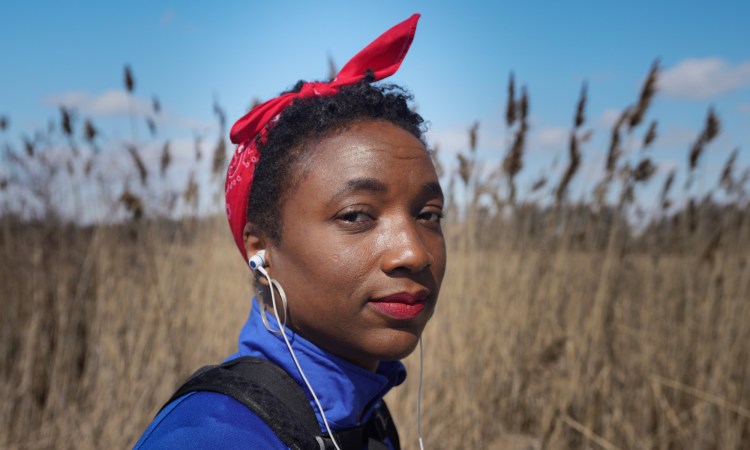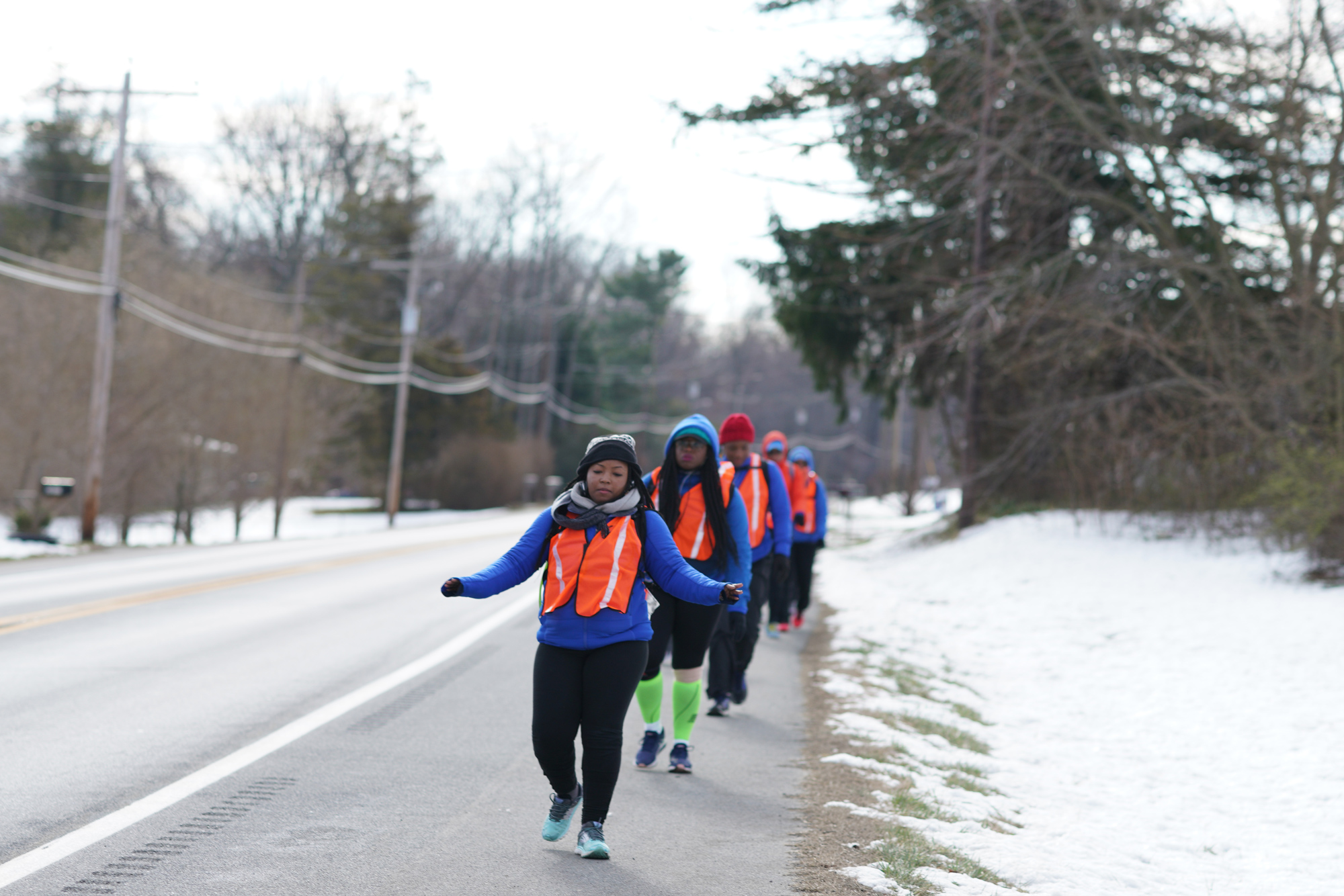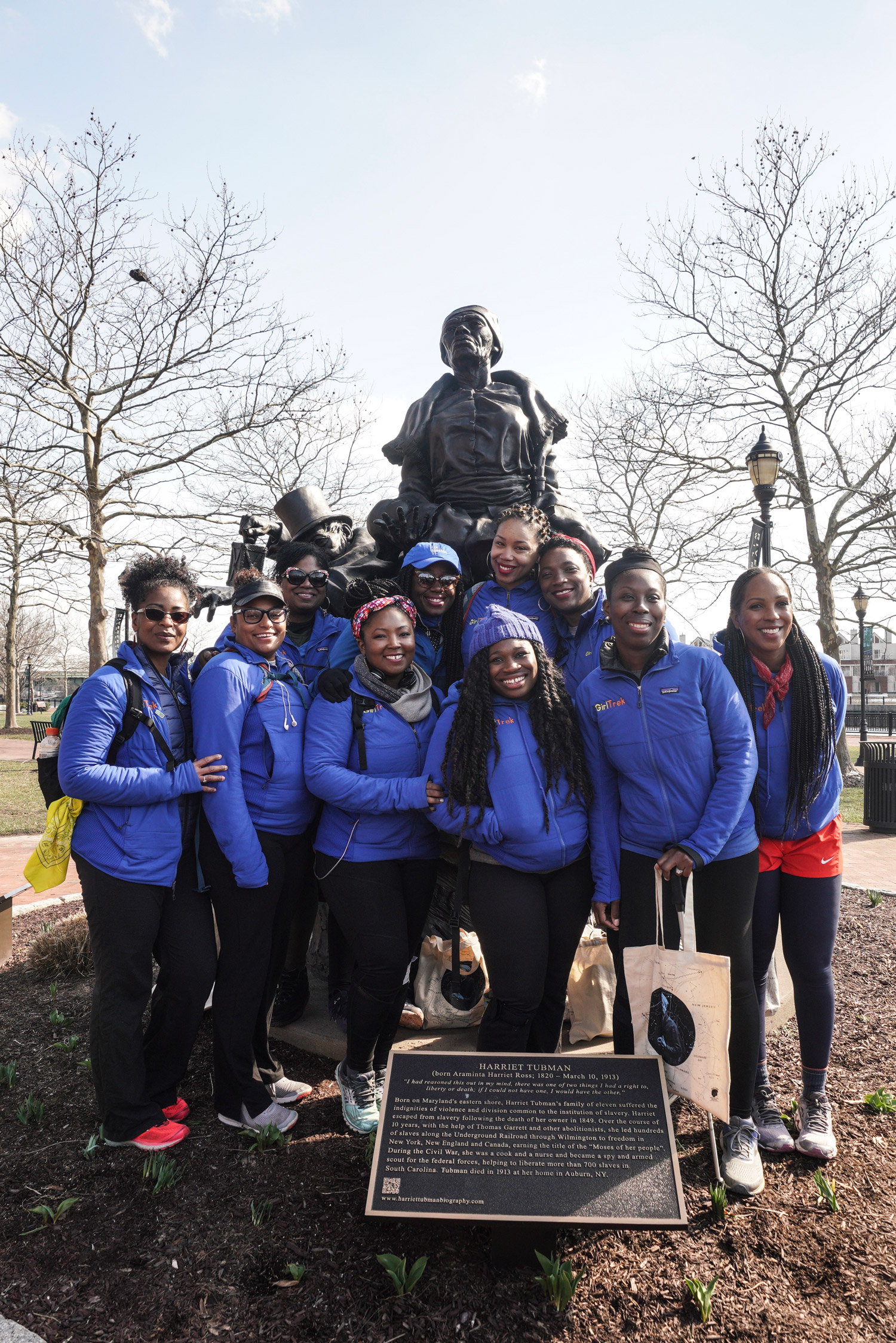
In March 2018, activists T. Morgan Dixon and Vanessa Garrison hiked the path that Harriet Tubman took to freedom nearly 170 years ago. Their journey was both painful and beautiful, demanding and transcendent. Here are some lessons from their long walk.
“When Black women walk, things change.”
T. Morgan Dixon, cofounder of GirlTrek, had Harriet Tubman in mind when she said these words on the TED stage in 2017. Tubman grew up enslaved in Maryland and, in 1849, at the age of 27, she set off on foot to free herself, travelling in the darkness of night and finally making her way to Philadelphia. But she didn’t stop there. She returned to the South at least 13 times to escort family members and hundreds of Black men and women to join her in freedom, becoming the most famous conductor of the Underground Railroad. In recognition of her efforts, in 1990 president George HW Bush proclaimed March 10 to be recognized as Harriet Tubman Day in the US.
To celebrate that day in 2018, Dixon and her GirlTrek cofounder, Vanessa Garrison, had an idea: What if they retraced Harriet Tubman’s path? They set out on March 6 from the shore of Maryland, where Tubman’s journey began, with all 10 members of GirlTrek’s national staff. The group hiked for five “long, beautiful” days through cities, small towns and woods, averaging some 20 miles daily. On March 10, they reached their finish line — Tubman-Garrett Park in Wilmington, Delaware — where they were greeted by a statue of Tubman and by hundreds of cheering GirlTrek supporters.
During the journey, Dixon and Garrison learned much that they’ll use this year, as they rally Black women in the US to join their movement for better health. Below are some of their most meaningful lessons.
Making an impact can mean taking on the things that scare you.
Their walk came at a key moment in GirlTrek’s history. The organization had its unofficial start in 2010 when Dixon and Garrison sent an email to female friends and family members, challenging them to walk 30 minutes a day — to heal their bodies, their families and their communities. Within six years, GirlTrek had become the largest health nonprofit for Black women and girls in America, with its groups walking in 600 cities and towns nationwide.
In early 2018, when the idea for taking the walk arose, Dixon and Garrison had just received the support of TED’s The Audacious Project. With that funding, they set an ambitious new goal of getting one million Black women walking by 2020. Says Dixon: “It was like drinking from a firehose. We thought: How do we go from a walking program to establishing a movement in American society? That was scary. We needed almost a spiritual quest to confront it.”
Hiking the Underground Railroad seemed to be that boundary-pushing exercise they were looking for — demanding physically and emotionally, as the trek would require confronting the horrors of slavery in the US and passing through communities with histories of violence toward African-Americans. The women had less than four weeks to plan the whole trip: to plot out a safe route, purchase equipment and train. “Marathon runners would not endorse our methods,” jokes Dixon. But doing something this big felt important. She adds, “There’s no other way to prepare ourselves for what’s ahead — which is changing culture, changing structures, changing systems — unless we make a discipline of doing the things that scare us.”

Walking in the footsteps of history brought the lowest of lows and the highest of highs.
During the journey, Dixon often felt overwhelmed — because of the shadows of the past enveloping her and because of the rough terrain. Their path wove through steep hills and dense forests, filled with sweet gum trees and their thorny balls of seeds. “Those hurt,” she says. “They cling to your clothes. They took my jacket off one time.”
There was also rain and sleet. “When I pictured the Underground Railroad and enslaved people seeking freedom, for some reason I never imagined cold weather,” says Dixon. “I thought of the forest in the steamy South and people hiding by brooks. I didn’t think of a nor’easter cutting your face while you’re holding your baby.” Even in modern outdoor gear, the walkers were often soaked and freezing. “There were a couple of times when I was just walking and crying,” says Dixon. “Like tears pouring down.”
Yet there were moments of transcendence, too. “Something happened at mile 58,” says Dixon. “It was a full-body moment. I was able to get out of my head, release the rage of injustice and escape the sadness of our collective trauma. Mile 58 was an experience of forgetting the pain of the past and being totally free of any fear of the future. I threw my head back, lifted my arms and rejoiced.”
Racial fear and hate are still alive in America.
The women of GirlTrek passed through communities that were isolated, economically depressed and all-white. “We stepped into unwelcoming gas stations and cafés full of camo, hunting supplies and pickup trucks with conservative bumper stickers. One had a Confederate flag,” says Dixon. “People were confused by us, and they were often rude. People were sometimes violently dismissive and they revved their engines next to us, splashing us with cold, snowy water.” But they tried to let these encounters roll off them. “We were so focused on our mission, we didn’t even have the bandwidth to respond,” says Dixon.
But incidents of kindness and love greatly outnumbered the hate.
Dixon recalls one moment when the group was only three miles into their day, and their gloves had already become soaked from the rain. They found a general store with a café. “It was filled with mostly men, all of them white,” says Dixon. “When we walked in, there was a collective gasp and then silence.” She asked a woman at the counter to point her to the restroom, while the others looked for warmer gloves. The store employee was curt with her. “But when I came back, she goes, ‘Oh my gosh, you’re the women on the news. You’re walking for Harriet Tubman.’” The woman gave the trekkers free coffee. “There were definitely men in the store who preferred that we not be there,” says Dixon. “And this woman stood up to offer support.”
The GirlTrek walkers were floored by all the encouragement they received, whether it was the woman at the café, the GirlTrek walkers who showed up with supplies, or an older African-American couple who passed them on the road and backed up to make sure they were OK.
In another powerful encounter, the walkers were approached one day by a tall, white man in his 60s who appeared to be waiting for them in his truck on the border of Maryland and Delaware. The trekkers’ initial instinct was to steer clear of him. Then the man — whose name was Jake Greene — surprised them. Dixon says, “He told us, ‘I heard about your journey along the Underground Railroad on Christian radio this morning, and God told me to bring you some supplies!’” He handed the women bottled water, granola bars and tissues. She adds, “The moment you start to question whether humanity can rise to a challenge, people surprise you with their ability to love.”
The women were surprised to find that it wasn’t just in white communities where they stood out.
Another memorable moment came as the GirlTrek team entered Wilmington, Delaware, at the end of their journey. “The crunch of the forest floor turned into the crunch of broken glass,” recalls Dixon. They entered an impoverished Black neighborhood, filled with liquor stores, churches and dollar stores. “I remember this man walking down the street, and he was struggling — to live, to make it, to hold his head up,” she says. But when he saw the women, “I can’t tell you how proud he was of us. We were in uniform, we were in lockstep, we had these bright blue jackets on, we had these headlamps on. And he was cheering for us.”
Dixon realized that, just as they were an incongruous sight when they were walking through conservative farming towns, they also stood out in urban neighborhoods. “To see a group of healthy Black women at peak performance, walking for something they believed in — it was as equally shocking to both communities,” she says. “That’s just interesting to me when you think of our mission to inspire one million women to do exactly what we were doing, to campaign in their neighborhoods and to be walking billboards for hope.”

The journey showed the women when they stand together, they can accomplish anything.
The walkers all had different levels of physical ability. But embarking on the journey together meant leaving no one behind. So when GirlTrek Chief of Staff Opa Johnson felt close to blacking out, or when Director of Communications Jewel Bush couldn’t continue because of blisters, or when Chief of External Relations Sandria Washington had knees that felt hot to the touch — the entire group stopped. While this could be frustrating, staying together was vital. “We never considered this to be a team-builder, but our sisterhood was truly forged,” says Dixon. “Those final miles were less a physical feat and more like a moving meditation. Our band of sisters became compact, rhythmic, graceful, strong. We were a unit.”
This sense of cohesion and coordination helped GirlTrek’s staff work as a well-oiled machine during their 50-stop #RoadtoSelma, a revival tour of teach-ins across the country, that took place in 2018 after their walk. And it will serve them as they launch this year’s Summer of Selma, which starts with a large group of GirlTrekkers doing the historic 54-mile walk through Alabama from Selma to Montgomery and ends with a three-day training festival that Dixon and Garrison want to be the “Woodstock of Black Girl Healing.”
Hiking the Underground Railroad showed GirlTrek’s national staff that, as a team, they can achieve anything as long as they respect their physical limits. “The journey underscored for us the importance of our physical and mental and spiritual health,” says Dixon. “As a team, we try to hold that principle in everything we do: Is this keeping our team healthy so we can do great service?”
The world doesn’t need superheroes to save it — just ordinary people who are willing to step up.
Before starting GirlTrek, Dixon was a history teacher, and Tubman has long been her muse. She says, “She saved her own life first and then went back to save the lives of others. It’s the blueprint for the work GirlTrek does.” After traversing Tubman’s escape route, Dixon is even more impressed by what Tubman did. She explains, “It feels unreal that she walked out by herself first, and it feels completely insane that she would come back again and again.” It’s an act that required deep love and deep courage.
Yet, after doing this walk, Dixon sees something new in her muse’s story. “Harriet Tubman is an inspiration, because she made the ordinary extraordinary,” she says. “Anyone who talks about her as a mythological figure does her an injustice. She didn’t have special powers — she was an everyday woman who took her life in her hands. She set out to live her healthiest, most fulfilled life with her own two legs. She just did it in a way that happened to shift the course of America.”
This idea — of how the ordinary among us can be extraordinary — is still making its mark on Dixon, months after the journey. “We’re in troubling times,” she says. “This is a defining moment for America. I think we’ll look back to this time almost the way generations have looked back to the Civil Rights Movement.”
But now she feels better prepared to face the challenges ahead, because she’ll have memories of the walk to remind her of the power that we all hold. “When I’m overwhelmed by the news and the violence that’s striking my community and the levels of sickness and disease, this notion that there’s something I can do to change it? That if I act courageously, I could launch a movement?” Dixon says. “That’s something every little girl should believe.”
Want to join GirlTrek in inspiring one million Black women to lead a health revolution? Become a champion of the Summer of Selma — one of the first ideas funded by TED’s The Audacious Project — and receive updates on how you can participate.
All images courtesy of GirlTrek.
Watch T. Morgan Dixon and Vanessa Garrison’s TED Talk:











